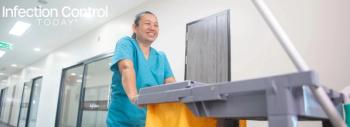
EcoHealth Alliance Identifies Ebola's Flight Path to the U.S.
EcoHealth Alliance, a nonprofit organization focused on local conservation and global health issues, developed a series of global maps using available airline flight route data to calculate and predict the probable arrival of Ebola hemorrhagic fever virus from infected travelers in West Africa. The data was collected from flight schedules from Liberia, Guinea, Sierra Leone, Morocco, Nigeria and Ghana. The analysis shows that the highest risk countries are the United States and much of Europe. The methods used in this risk analysis were developed by EcoHealth Alliance's previous examination of the global spread of influenza A/H1N1 that originated in Mexico in 2009 with findings published in the scientific journal PLoS One.
The Ebola outbreak in West Africa has caused significant concerns over the possible spread outside of the region. EcoHealth Alliance's modeling team identified the top five U.S. airports that had direct flight arrivals from West African countries. In order of highest risk include New York's JFK International Airport, Washington Dulles International Airport, Hartsfield-Jackson Atlanta International Airport, Houston's George Bush Intercontinental Airport and Boston Logan International Airport. Last week, the World Health Organization declared the Ebola outbreak in West Africa to be an international public health emergency.
The capacity of diseases to spread via traveling passengers varies significantly and scientists cannot predict the actual date or times of the plausible arrival of the Ebola virus via an infected traveler. Scientists can estimate the relative risk of the virus spreading from country to country by identifying the most direct entry points. EcoHealth Alliance is on the frontlines of predicting and preventing pandemic events globally. The nonprofit's research spans specific emerging disease 'hotspots' regions from Central and South America to South Asia. EcoHealth Alliance has researched over 60 years of disease data to focus its programs, partnerships and capacity building efforts in regions most likely to be the point of origin for new emerging infectious disease outbreaks. Ecological disturbances such as deforestation, intensive agricultural expansion, wildlife trade, and climate change – all human-induced changes to the environment – are driving disease emergence and outbreaks with more frequency. Over the past four decades, approximately 75 percent of emerging infectious diseases affecting people are diseases from an animal origin, and approximately 60 percent of all human pathogens are zoonotic.
"It's easy to point the finger at wildlife as the reservoirs of disease but the real culprit in this scenario is human interaction with wildlife from bushmeat hunting, illegal wildlife trade, habitat destruction and deforestation," says Dr. William Karesh, wildlife veterinarian and executive vice president of health and policy at EcoHealth Alliance.
The global maps prepared by EcoHealth Alliance scientists illustrate how Ebola may spread via international flight routes. Other countries most at risk include the U.K., Netherlands, Germany, France, Switzerland, Denmark, Portugal, Austria, Ireland, Italy, Spain, Senegal, Ghana, Gambia, Israel, United Arab Emirates, Qatar, and Japan. "Our initial work identifying the pathways of the 2009 outbreak of Influenza A/H1N1 formed the basis of our approach to understand the plausible routes that Ebola could present as a risk to global communities," says Dr. Parviez Hosseini, senior research fellow at EcoHealth Alliance.
The global spotlight on the current Ebola outbreak and its pandemic potential, point to a larger issues around zoonotic disease emergence. Human-induced changes to the natural environment are causing rapid and frequent disease emergence. The lack of a unified global approach to public health issues and wildlife conservation is a driving force that requires international action and funding. Diseases such as malaria, dengue, Lassa fever, Chikungunya and other vector-borne diseases have collectively infected and caused higher morbidity rates than Ebola has historically – these other diseases require concerted effort to control on a global basis.
"Our focus must be on all known zoonotic diseases that threaten human health, not only the outbreaks that garner the most media attention," says Dr. Peter Daszak, disease ecologist and president of EcoHealth Alliance. "Treating the disease is a necessary reactive response but a proactive approach is clearly needed. Our predictive modeling tools and expertise allow us to target these diseases before they become a global pandemic on a global scale."
Source: EcoHealth Alliance
Newsletter
Stay prepared and protected with Infection Control Today's newsletter, delivering essential updates, best practices, and expert insights for infection preventionists.






